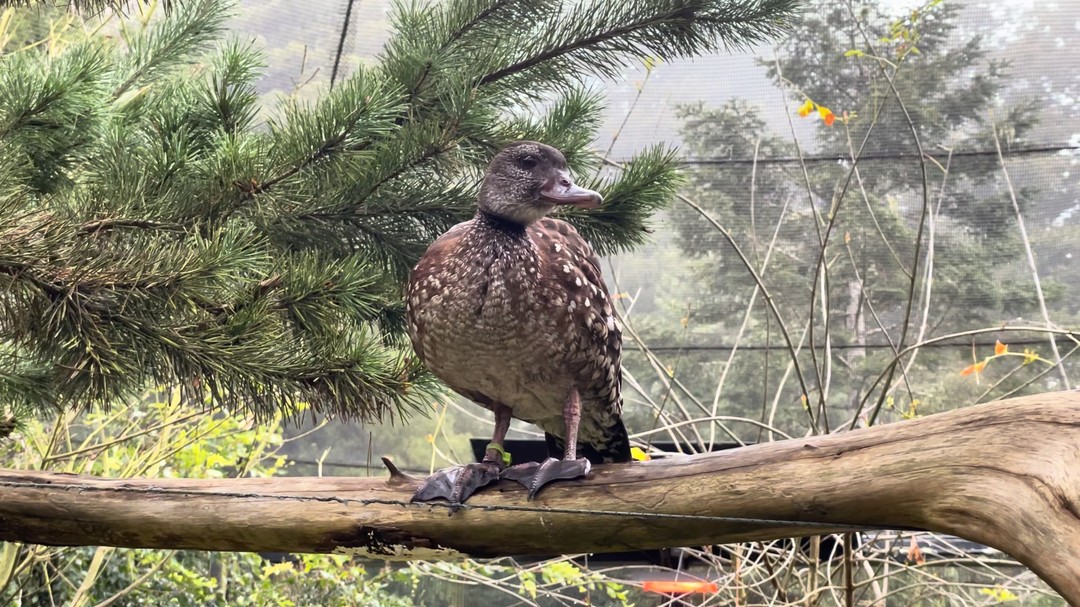- Exploration of the spotted whistling duck and its behavior, emphasizing Piccolo as a case study.
- The significance of morning routines in duck husbandry and the role of zookeepers.
- Identifying bird vocalizations and understanding interspecies communication in avian habitats.
- Conservation implications based on zookeeping practices and wildlife management.
- The importance of educational programs in enhancing public understanding of avian species.
The spotted whistling duck, known scientifically as Dendrocygna guttata, is a fascinating member of the family Anatidae, which encompasses ducks, geese, and swans. Native to the wetlands of Southeast Asia and parts of Papua New Guinea, the spotted whistling duck is renowned for its distinct appearance and vocalizations. These ducks derive their name from their distinctive whistling calls, which they often use to communicate with each other. They sport a spotted pattern, particularly visible on their sides, which aids in camouflage in the wild. Among these captivating creatures is Piccolo, an exemplar of his species who resides under the care of keen zookeepers dedicated to fostering both his health and educational value.
Piccolo partakes in a morning routine designed to prepare him for the day ahead. On foggy mornings, such as the one highlighted, he can be observed preening his feathers. Preening is a fundamental activity for waterfowl, essential for maintaining the integrity of their plumage. Ducks, like Piccolo, preen to align their feathers correctly while also applying oil from their uropygial gland, located near the base of the tail. This oiling process ensures their feathers remain waterproof and in optimal condition for flight. As part of his morning schedule, Piccolo engages in a pre-breakfast bug toss, facilitated by his zookeeper—a practice that not only serves as a nutritious meal but also simulates natural foraging behavior.
Morning routines are integral to duck husbandry. Preening and similar behaviors are indicators of a duck’s well-being and help to strengthen the bond between the animal and its caretaker. Piccolo’s zookeepers play an essential role in overseeing these activities, ensuring that each duck under their care is provided with the necessary environment to thrive. This often involves a keen understanding of individual and species-specific needs. For Piccolo, this includes the provision of a varied diet, enriched habitat, and periodic health checks—a reflection of the exemplary standards in aviary management.
Moreover, the foggy morning provides an exquisite backdrop for observing interspecies interaction, discernible through the chorus of bird calls. Notably, identifying the bird species vocalizing in the background can offer insights into avian communication networks within Piccolo’s habitat. By tuning into these vocalizations, researchers and enthusiasts can identify not just Piccolo’s fellow aviary inhabitants but also the broader ecological interactions at play. Recognizing these calls assists in understanding ecological dynamics, where each species may fulfill unique roles within the ecosystem.
In terms of conservation, the role of zoos and managed care facilities is crucial. These institutions contribute to the preservation and study of species such as the spotted whistling duck. By ensuring an environment that mimics their natural habitats, zookeepers like those caring for Piccolo play a pivotal role in conservation research, often taking part in breeding programs aimed at sustaining populations faced with habitat loss in the wild. Such programs are invaluable, equipping zoologists with data that can inform conservation strategies on a larger scale.
Educational programs also serve as a bridge connecting the public with the avian world. By incorporating live demonstrations, informative talks, and up-close encounters with residents like Piccolo, zoos cultivate a deeper appreciation and understanding of these creatures. These programs dispel myths, educate on ecological significance, and inspire future conservationists. The success of these programs depends heavily on the expertise of zoo staff and their commitment to delivering quality education, ensuring visitors leave with enhanced knowledge and empathy towards animals like Piccolo.
In conclusion, Piccolo, the spotted whistling duck, with his morning routine of preening and bug-tossing, illustrates broader themes in avian care and conservation. His life offers a glimpse into the dedication of zookeepers and the essential functions of zoos as centers of education and conservation. Embracing such insights allows us to appreciate the delicate balance of nature and the critical role humans play in fostering environments where species like the spotted whistling duck can continue to thrive.
*****
Source Description
Foggy morning check on Piccolo the spotted whistling duck! He was preening and getting ready for a morning bug toss from his zookeeper.
Can you identify what bird species is vocalizing in the background? (Bonus points for the familiar, quieter, farther away vocalization you hear near the end.)


